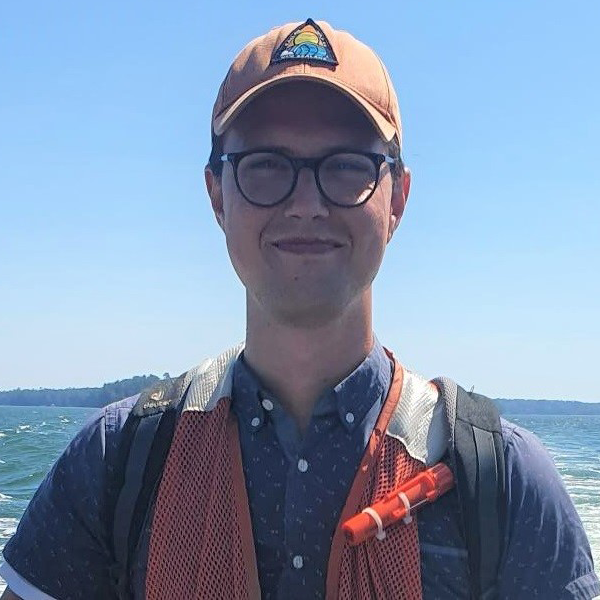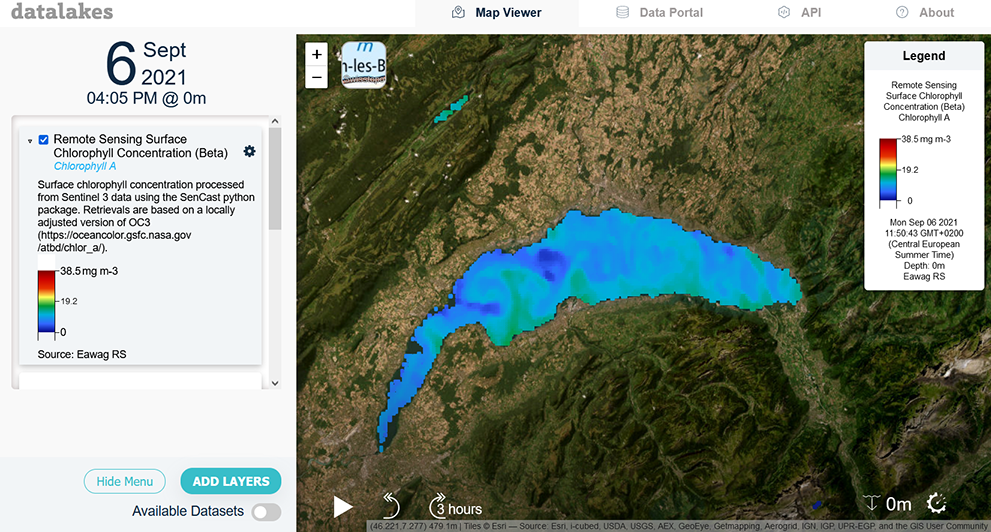Early Adopter

Swiss Federal Institute of Aquatic Science and Technology (EAWAG)
Applied Research Topic
Potential Applications ► Water quality management decision support tool for Swiss deep lakes
Description
Eutrophication, a major problem in many lakes, can have serious ecological and economic impacts. The Lake3P project focuses on deep lakes in the perialpine region, which experience a delayed recovery from eutrophication due to the historic phosphorus enrichment of the hypolimnion. They are also exposed to rising temperatures and modified hydrological regimes due to climate change. A key effect of rising temperatures in lakes is enhanced thermal stratification, which causes dimictic lakes to become monomictic. This interplay of the different processes poses a significant challenge for environmental monitoring and lake management; it affects practically all lakes but has consequences that strongly depend on the lake type. Satellite remote sensing provides repeated and direct measurements on large spatial and temporal scales of lake surface water. The Lake3P project aims to create new primary production products for Swiss lakes using satellite data from the PACE ocean color instrument (OCI). The project will use autonomous in situ reference measurements from the LéXPLORE platform in Lake Geneva and a smaller platform in Lake Greifensee for calibration and validation of the PACE-OCI satellite products. Our satellite-based estimates of primary production will be made available in EAWAG's open-access lake research data portal (Datalakes) and inform lake management and monitoring authorities such as the International Commission for the Protection of Lake Geneva (CIPEL) and national administrative units (Swiss cantons, French départements) about short term events and long-term changes in the variables of interest.
Significance
Lake3P focuses on measuring primary production in lakes through satellite sensors. These sensors can gather observations over Swiss lakes on a daily and pixel-level basis, which enhances the study and monitoring of primary production. In comparison to traditional point-based surface in situ measurements, remote sensing is also a cost-effective information source, as in situ measurements typically involve high material and labor cost. Furthermore, remote sensing data can be linked to 3D hydrodynamic models of lakes, which can further assist to describe fine-scale dynamics and drivers of phytoplankton primary productivity. Information on primary productivity can be used to better understand and manage lake ecological status, to aid in the implementation and control of lake restoration programs and to report on lake ecological status changes due to global warming. Additionally, information on primary productivity is useful to the public, including sailors, fishermen and other residents who frequently spend time at, in or on the lake.The Lake3P project builds on Datalakes, a lake measurement and remote sensing product repository that allows the data to be assessed and obtained in an easy manner. Another important aspect of the project is that it follows a 100% open data policy, meaning that the data is publicly accessible and reproducible. The open data policy ensures transparency of the scientific findings and results, motivates new collaborations with other institutions and overall simplifies and increases the uptake of the satellite products by end users.
Why PACE
The PACE OCI sensor's high revisit frequency will aid in understanding and tracking changes in aquatic primary production rates, which is crucial for monitoring and understanding changes in the ecological status of lakes.
End User(s)
The end users of this project include researchers and environmental agencies working on the management and preservation of large lakes, such as the International Commission for the Protection of Lake Geneva (CIPEL), local organizations like the Association for the Protection of Lake Geneva (ASL) and national administrative units (Swiss cantons, French departments, German federal states).
SAT Partner(s)
Daniel OdermattPublications
Gupana, R.S., Damm, A., Rahaghi, A.I., Minaudo, C., Odermatt, D., 2022. Non-photochemical quenching estimates from in situ spectroradiometer measurements: implications on remote sensing of sun-induced chlorophyll fluorescence in lakes. Opt. Express, OE 30, 46762-46781. https://doi.org/10.1364/OE.469402
Minaudo, C., Odermatt, D., Bouffard, D., Rahaghi, A.I., Lavanchy, S., Wüest, A., 2021. The Imprint of Primary Production on High-Frequency Profiles of Lake Optical Properties. Environ. Sci. Technol. 55, 14234-14244. https://doi.org/10.1021/acs.est.1c02585
Müller, B., Steinsberger, T., Schwefel, R., Gächter, R., Sturm, M., Wüest, A., 2019. Oxygen consumption in seasonally stratified lakes decreases only below a marginal phosphorus threshold. Sci Rep 9, 18054. https://doi.org/10.1038/s41598-019-54486-3
Pomati, F., Matthews, B., Seehausen, O., Ibelings, B.W., 2017. Eutrophication and climate warming alter spatial (depth) co-occurrence patterns of lake phytoplankton assemblages. Hydrobiologia 787, 375-385. https://doi.org/10.1007/s10750-016-2981-6
Råman Vinnå, L., Medhaug, I., Schmid, M., Bouffard, D., 2021. The vulnerability of lakes to climate change along an altitudinal gradient. Commun Earth Environ 2, 1-10. https://doi.org/10.1038/s43247-021-00106-w
Werther, M., Odermatt, D., Simis, S.G.H., Gurlin, D., Lehmann, M.K., Kutser, T., Gupana, R., Varley, A., Hunter, P.D., Tyler, A.N., Spyrakos, E., 2022. A Bayesian approach for remote sensing of chlorophyll-a and associated retrieval uncertainty in oligotrophic and mesotrophic lakes. Remote Sensing of Environment 283, 113295. https://doi.org/10.1016/j.rse.2022.113295



